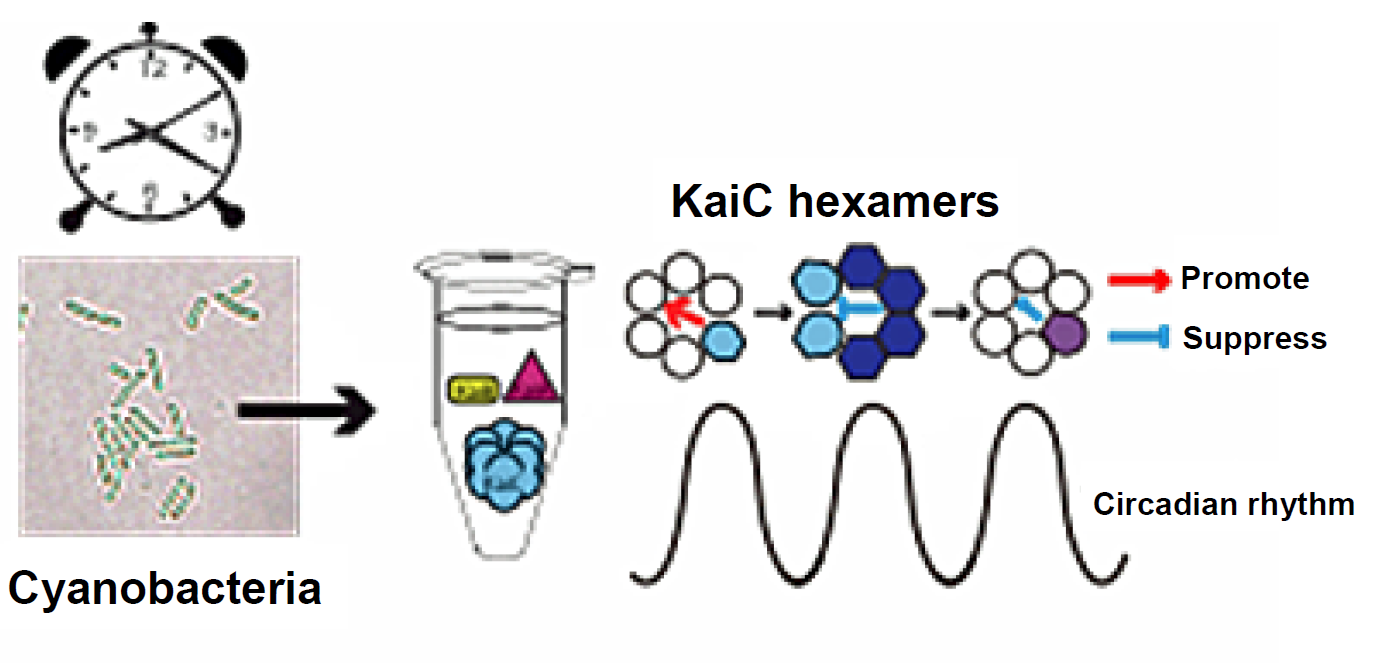 Assistant Professor Yohko Kitayama at Nagoya University and her coworkers have discovered a mechanism of a clock protein KaiC regulating circadian rhythm in cyanobacteria. Their paper was published in Nature Communications on December 5, 2013.
Assistant Professor Yohko Kitayama at Nagoya University and her coworkers have discovered a mechanism of a clock protein KaiC regulating circadian rhythm in cyanobacteria. Their paper was published in Nature Communications on December 5, 2013.
Cyanobacteria are the simplest form of life with a circadian clock. They possess three clock proteins, KaiA, KaiB, and KaiC, which function as biological timekeepers. KaiC sets a circadian rhythm by activating and deactivating itself regularly. KaiC has a ring structure consisting of six protein subunits. The protein subunits are activated by external stimuli, and the ring structure is believed to trigger the activation and deactivation of the clock protein. However, a detailed mechanism underlying this process has not yet been elucidated.
Prof. Kitayama and her colleagues attempted to explain the role of the ring structure of KaiC in regulating circadian rhythm in cyanobacteria by deconstructing the six protein subunits in the ring structure, mixing them, and then reconstructing them. Consequently, they discovered that the phosphoric groups regularly get transferred between the contacting surfaces of the subunits and control the activation as well as deactivation of KaiC. Furthermore, addition of a mutant subunit in a phosphorylated state disturbed the circadian rhythm. Therefore, it was elucidated that phosphorylation and dephosphorylation were triggered by cross-interaction among the six subunits in the ring structure, which controlled the activation and deactivation of KaiC. This mechanism can be applied to control the circadian clock in living systems and promote growth by optimizing time for metabolic functions such as photosynthesis. It is widely expected that further research on this mechanism will contribute to the deeper understanding of the circadian clock in living organisms such as human beings.
Assistant Professor Yohko Kitayama
Prof. Kitayama was fascinated by the circadian clock when she was an undergraduate at Nagoya University and following her research at graduate school, she chose to become a researcher. Many living organisms, including plants, insects, and animals, have the circadian clock, and the underlying mechanism often overlaps. Prof. Kitayama found it interesting that the mechanism that she and her coworkers discovered in cyanobacteria could be applied to other living forms. She enjoys discovering new mechanisms in living systems and aims to contribute to public wellbeing in general through her research outcome.
Outlook for the Future
"I would like to elucidate the mechanisms underlying the circadian clock and determine the contributions of circadian clock to living organisms. In addition I am interested in exploring a way to control and utilize the circadian clock."
Message to Young Students
 "Through my research, I am often amazed by the art of living in various organisms, and I find it very appealing to be the first to discover a novel mechanism in living systems. Please do not hesitate to face challenges."
"Through my research, I am often amazed by the art of living in various organisms, and I find it very appealing to be the first to discover a novel mechanism in living systems. Please do not hesitate to face challenges."
Links
Research Information
Assistant Professor Yohko Kitayama Information